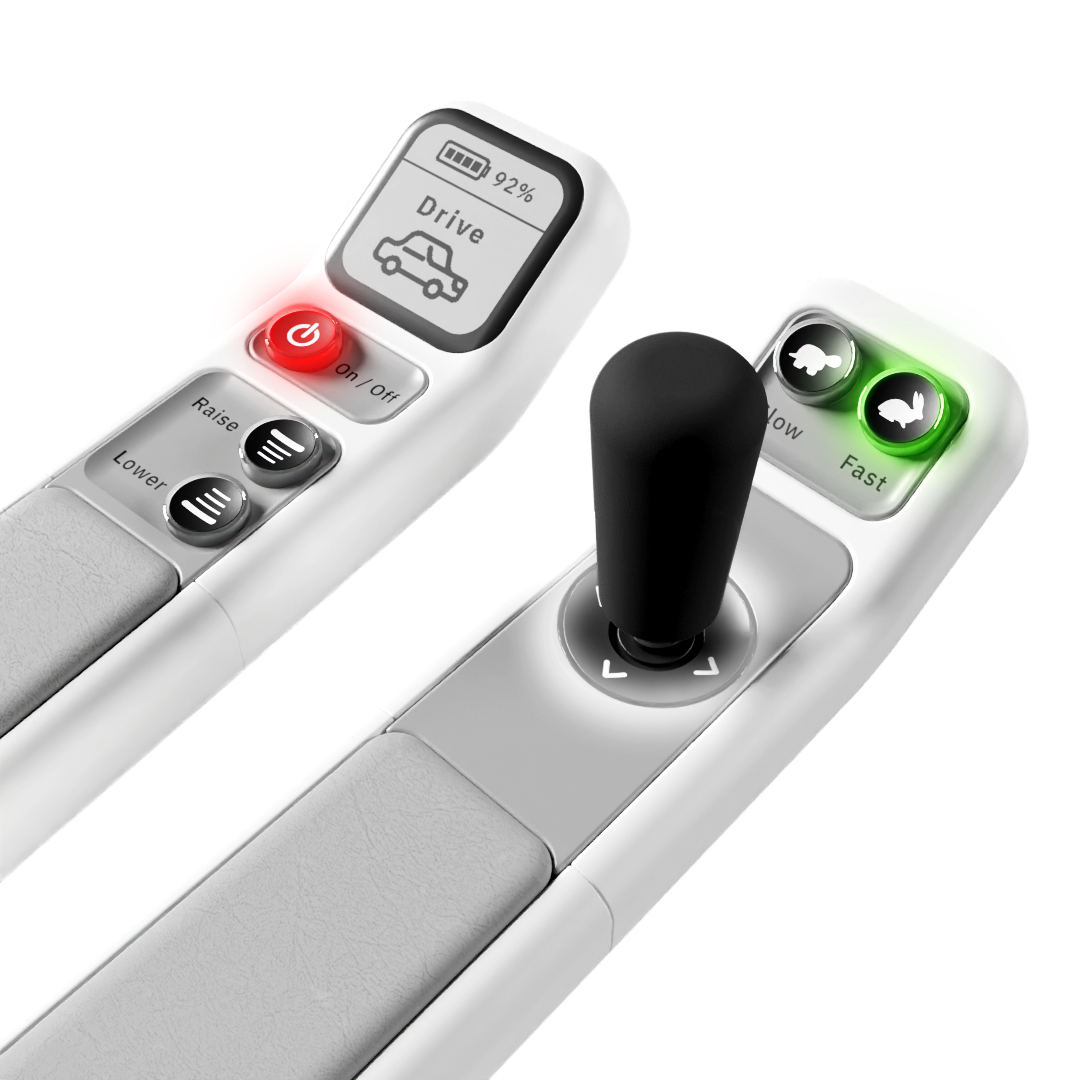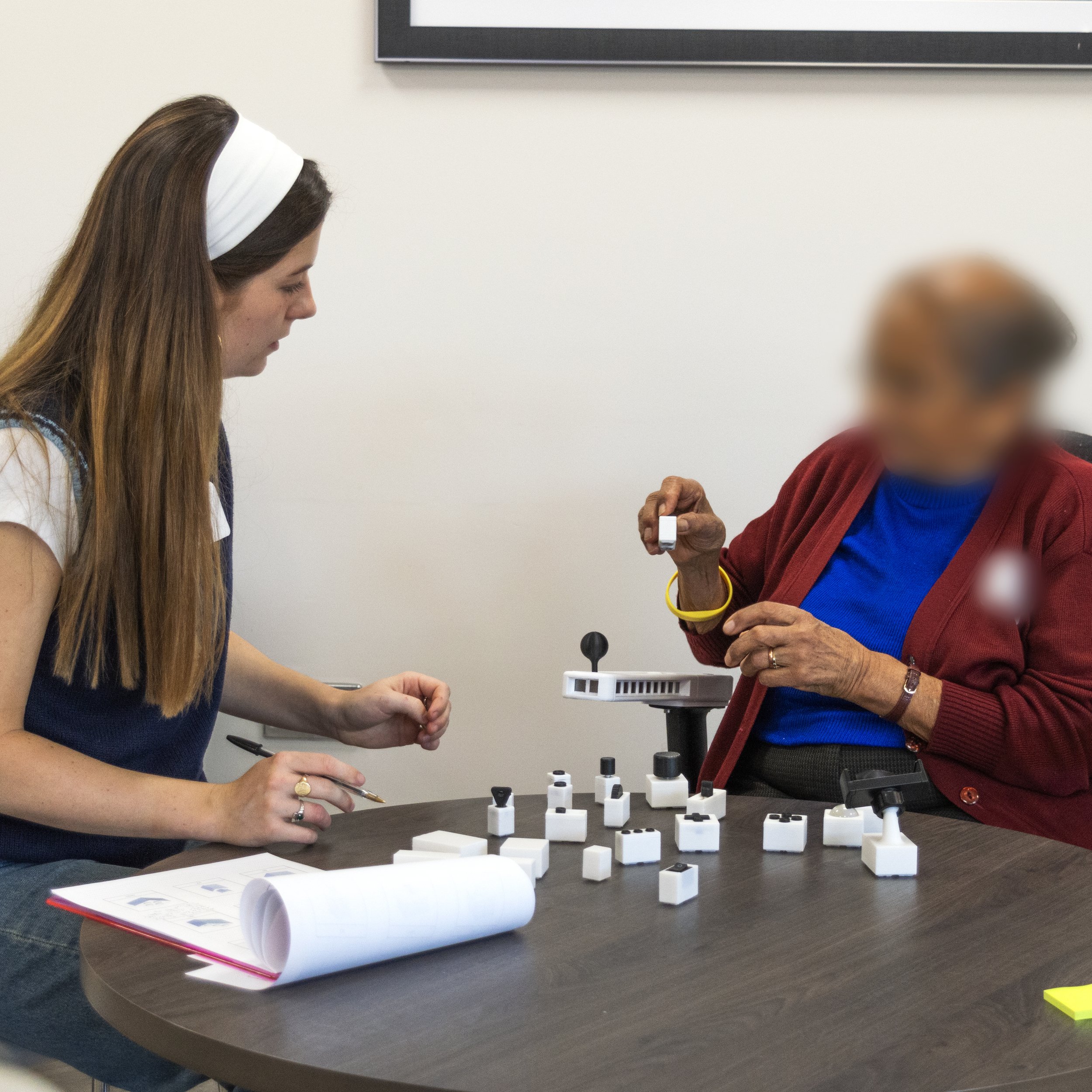
Centaur Control System
An intuitive control system for a self-balancing wheelchair.
2023 - 2024
Centaur Robotics
Client
Year
Brief
Research and redevelop an intuitive, user-led control interface mounted on the Centaur arm rests. This multi-faceted project centred around several key requirements:
Conduct user research sessions to inform the new design.
Consider the needs of the elderly – the primary product audience.
Easily control all major motions and movements on wheelchair.
Align to modern product aesthetic.
Ensure designs are ready for mass manufacture.
Outcome
Used secondary research to inform and deliver two Nyker led user research sessions (quantitative and qualitative) with the target demographic. Implemented insights to produce a formal set of guidelines for all future control interfaces. Delivered a finished design using these guidelines for the initial product launch.
The research and final design were presented at the Royal College of Arts (RCA) in February 2024 as part of the Design Age Institutes funding program. Our final design is now being implemented into Centaur’s first production variant.

Key Design Features
Intuitive control system that reduces the need for user training.
Ergonomic controls in optimal locations for easier and more accurate use.
Use of lights, text, and colours which deliver proven improvement on functionality.
E-Ink display to show key information clearly.
Leading User-Testing and Co-Design Approaches to Create Truly Tailored Controls
Developing the new control system for Centaur relied on user insights and feedback. Our goal to make a measurable improvement to the existing controls meant that we needed to gather real users and gain reliable data.
We conceived, developed, and undertook two separate user trials during this project. The first included several custom magnetic test rigs, produced in-house, which acted as a platform for users to build their ideal set of controls. We took the feedback from this to our second session, where we tested on an operational vehicle. The outcome of both sessions is a design which has been informed and inspired by actual users.

Developing Guidelines for Product Creation and Designing for the Elderly
The core deliverable for this project was a detailed set of guidelines for how Centaur should design and implement the human machine interface (HMI) for all current and future mobility devices. These guidelines explained everything from button sizes and positions to language and graphic use.
Our design guides now form a foundation for all future teams working at Centaur to construct their own control systems which we can feel confident are understandable and accessible to aging users.

Building Working Prototypes and Test Rigs Using In-House Workshop Facilities
Developing our concepts and building user testing tools was made possible with our in-house prototyping facilities. Having prototyping capabilities speeds up our design process and offers our clients cost effective options for testing.
For both Centaur user testing sessions, we printed numerous full scale parts to represent the arms of the mobility device. We were able to quickly produce multiple iterations of these models without waiting for third party lead times, allowing us to meet tight funding deadlines.
Effectively Supporting Centaur to Secure Grant Funding
This project was funded by the Design Age Institute, an academic organisation focused on supporting products for the aging population. We supported Centaur from initial grant pitch through to final delivery and exhibition.
We were able to modify our agile project management structures to support Centaur in their grant application process, and were heavily involved in giving presentations to the grant panel. We then routed the project through the grant structure to successfully deliver on each of the six strict milestones.
Our Director, Dave, exhibited the project at the Royal College of Arts (RCA) in London, showing the outcomes and research to influential leaders of design for the aging population.








